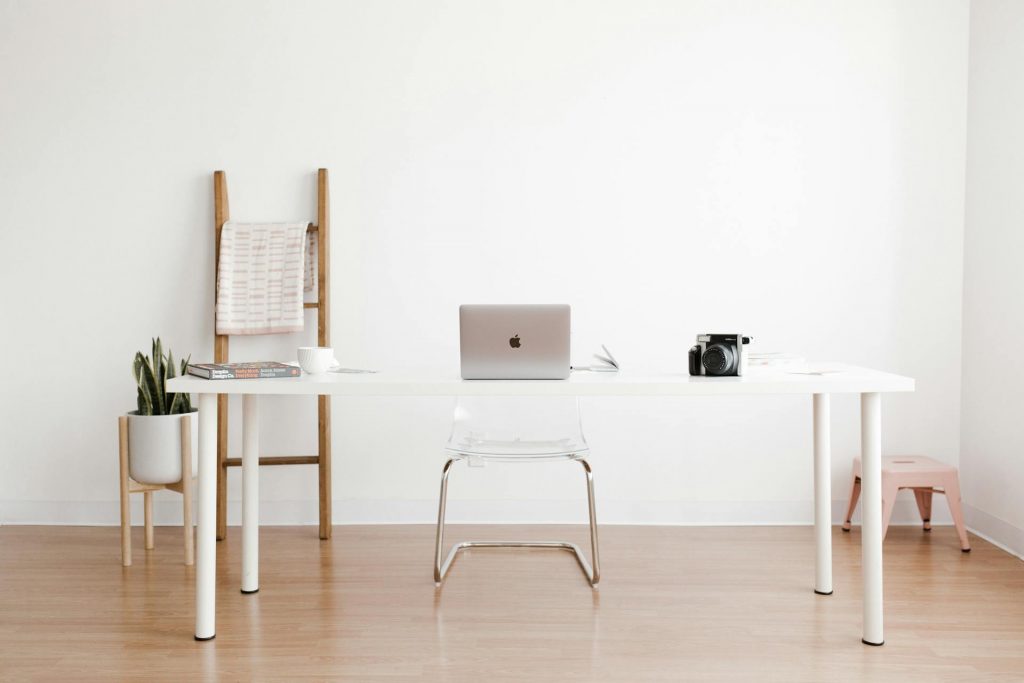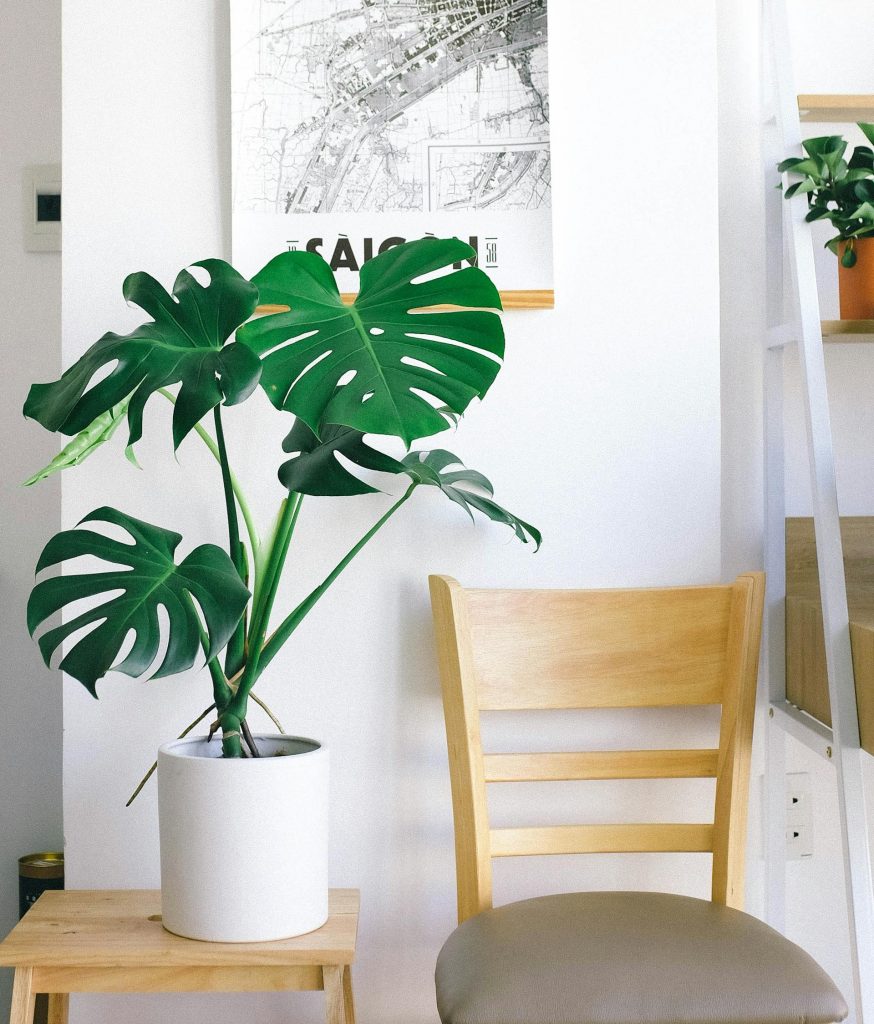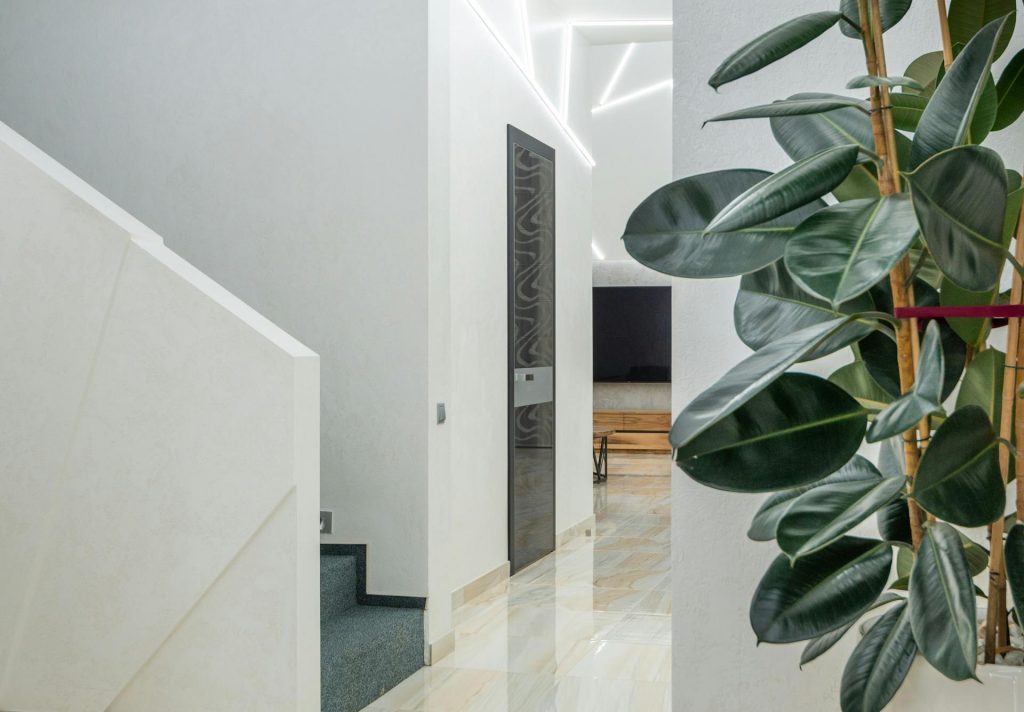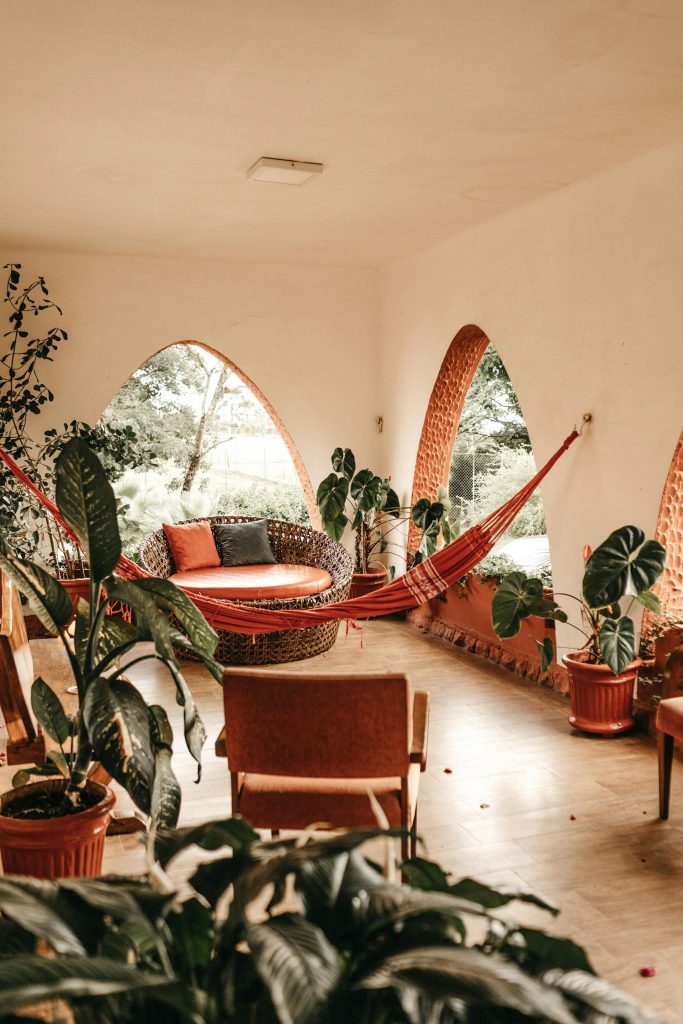Interior design is more than just a matter of arranging furniture and choosing colors; it’s a profound reflection of one’s personal aesthetic sense and style. Among the vast array of design elements available to the discerning decorator, one stands out as particularly unique and versatile: indoor plants.
Indoor plants are more than just decorative items; they represent an integral part of the overall design concept. Their natural beauty, flexibility in placement, and the serene ambiance they create makes them a favored choice in contemporary design schemes. They bring a touch of nature into the home, transforming any space into a peaceful and inviting environment.
In this comprehensive article, we delve deeply into the aesthetic appeal of indoor plants in interior design. We explore their importance, not just as elements of decor, but as key contributors to the overall ambiance of a space.
We will also outline the most popular types of plants for interior design, offering a glimpse into the wide variety of species available for interior greenery. From small, delicate ferns to large, imposing fiddle-leaf figs, there’s a plant to suit every style and space.
Additionally, we will discuss various innovative ways to incorporate indoor plants into a variety of design styles. Whether you’re aiming for a minimalist, modern aesthetic or a more rustic, farmhouse vibe, there’s a way to integrate plants that will enhance your design rather than detract from it.
Finally, we will provide practical maintenance tips to ensure your indoor plants stay healthy and vibrant, contributing to the overall look and feel of your space for years to come.
Whether you’re a seasoned interior designer seeking fresh inspiration, a plant enthusiast looking to spruce up your space, or someone new to both worlds, this guide is designed to provide comprehensive insights into the enriching world of indoor plants in interior design.
Importance of Indoor Plants in Interior Design
Indoor plants bring a unique aesthetic appeal to interior design. Their varied colors, shapes, and textures can complement any decor style, adding a natural touch to man-made spaces. The use of indoor plants can transform a room, making it more inviting and visually interesting. The presence of greenery can create a sense of calm and relaxation, enhancing the overall ambiance of the interior. Moreover, certain indoor plants can act as focal points due to their size or unique characteristics. Whether they’re used as statement pieces or subtle additions, indoor plants can significantly elevate the aesthetic quality of a space.
Indoor plants significantly contribute to creating a fresh and lively atmosphere in a myriad of ways.
Foremost, they act as a natural source of oxygen, which means they play a critical role in enhancing the overall air quality of the space they inhabit. They effectively absorb carbon dioxide, and in exchange, produce oxygen. This fundamental process leads to an increased oxygen level in the room, which in turn results in a feeling of freshness and revitalization.
Secondly, the vibrant green color that most indoor plants possess can infuse a sense of vitality and liveliness into the room. This attribute of plants can be particularly beneficial in spaces that are devoid of natural light or those decorated with a neutral or monochromatic color scheme. In such settings, the lush green of the plants can provide a lively, eye-catching pop of color, thereby breaking the monotony and adding an exciting visual element to the space.
Lastly, it’s important to remember that plants are living, breathing entities. Their growth, development, and subtle movements over time can impart a sense of dynamism and life into an otherwise static interior. As they grow and change, they can transform the space around them, adding to the overall freshness of the atmosphere. This ever-changing dynamic can keep the interior feeling vibrant and alive, which can have a positive effect on the people who inhabit the space.
In conclusion, the presence of indoor plants can do wonders to the ambiance of a space. Not only do they enhance the air quality and aesthetic appeal, but they also bring a unique sense of dynamism and life that is hard to replicate with inanimate decor items.
Popular Types of Indoor Plants for Interior Design
There are a multitude of indoor plants that are often favored in the realm of interior design. These plants are particularly noted for their aesthetic appeal, which adds a touch of nature-inspired beauty to any space. Not only are they visually pleasing, but they also have the unique ability to effortlessly complement a variety of decor styles. Whether it’s a minimalist modern space or a cozy, rustic setting, these indoor plants can seamlessly enhance the overall look and feel of any interior design.
Consider, for example, the Fiddle Leaf Fig, a plant that is often favored for its large, glossy leaves and its impressive height. The beauty of this plant is such that it can act as a statement piece in any room, drawing the eye and creating a focal point.
Then there’s the Snake Plant, which is characterized by tall, slender leaves. This plant is particularly loved for its hardiness and its ability to thrive even in low-light conditions. Moreover, it is known for its air-purifying qualities, making it a popular choice for those who want to improve the air quality in their homes.
Succulents, on the other hand, are a different kind of indoor plant altogether. Take the Echeveria, for example, which is a type of succulent. These plants are popular for their unique shapes and colors, and they have a low-maintenance nature that makes them perfect for desks or shelves. They don’t require much attention, yet they add a touch of nature to any space.
Finally, we have plants like the Monstera Deliciosa and the Spider Plant. The Monstera Deliciosa is notable for its distinctive split leaves, which bring a touch of the tropics indoors. It’s like having a piece of a tropical rainforest right in your living room.
The Spider Plant, known for its arching leaves and baby plantlets, adds a charming cascading effect when placed on a high shelf. It’s a plant that not only looks beautiful but also brings a sense of movement and dynamism to a space.
Each of these plants, sourced from various corners of the world, brings its own unique characteristics to the table, adding a layer of depth and interest to the overall interior design. Their varied textures, hues, and forms introduce an element of the natural world into the space, enhancing its appeal and creating a serene, welcoming atmosphere.
The inclusion of these plants not only contributes to the aesthetic value of the interior but also promotes a sense of wellbeing and tranquility.
How to Incorporate Indoor Plants into Various Design Styles
Incorporating indoor plants into various design styles requires a keen understanding of the aesthetics of each style. In a modern design style, characterized by clean lines and a minimalist approach, plants with striking shapes like Snake Plants or succulents can serve as bold focal points. In a bohemian design style, which embraces a more eclectic and naturalistic vibe, lush green plants like Monstera Deliciosa or Fiddle Leaf Fig can add to the relaxed and cozy atmosphere. For a minimalist design style, where simplicity and functionality are key, a single, well-chosen plant like a Rubber Tree or a Peace Lily can provide a pop of color without cluttering the space.
Examples:
- Modern Design: Snake Plant, Succulents

- Bohemian Design: Monstera Deliciosa, Fiddle Leaf Fig

- Minimalist Design: Rubber Tree, Peace Lily

Maintenance Tips for Indoor Plants
Ensuring the longevity and aesthetically pleasing appearance of indoor plants involves several crucial steps, each one as important as the next. Initially, it is absolutely vital to have a keen understanding of the distinct needs of each plant species because each one has its own unique light, water, and soil requirements.
For instance, there are some plants that require bright, indirect light to thrive, whereas others are perfectly capable of flourishing even in low-light conditions. This shows just how much variation there can be when it comes to the light requirements of different plant species.
In the same vein, watering needs also vary drastically among different plants. Some plants need their soil to remain consistently moist for optimal growth. However, others might need a period to dry out in between watering sessions.
Another critical factor to consider is the overall environment of the room in terms of humidity and temperature. This is because some plants prefer environments that are more humid or warmer than others. Regularly inspecting the plant for any signs of pests or disease is an effective method of nipping any potential problems in the bud and addressing them at an early stage.
Furthermore, the occasional act of pruning or trimming can do wonders in maintaining the plant’s shape and size. This not only contributes to the plant’s overall health but also enhances its aesthetic appeal, making it a pleasing addition to your space.
Lastly, an often overlooked but very important aspect of plant care is repotting. When a plant outgrows its current pot, it’s important to move it to a larger one to ensure its continuous growth and health. This ensures that the plant has enough room to grow and that it can continue to add beauty and fresh air to any indoor space.
The incorporation of indoor plants into interior design is much more than just a passing trend. This natural element not only enhances the aesthetic appeal of a space but also contributes to the overall health and well-being of those who inhabit it.
The varied shapes, colors, and textures of indoor plants offer endless possibilities for designers to create unique and captivating spaces. From acting as statement pieces, creating a sense of calm and relaxation, to improving the air quality, plants play versatile roles in enhancing the ambiance of an interior.
Whether it’s a minimalist modern setting or a cozy rustic space, indoor plants have the unique ability to seamlessly blend with various design styles. However, it’s crucial to understand each plant’s maintenance needs to ensure their longevity and continuous contribution to the space’s appeal. As we have seen, indoor plants require varying amounts of light, water, and care depending on their species. Thus, understanding these needs and providing the appropriate care is crucial to maintaining their health and visual appeal.
As we move towards a future where indoor living spaces become increasingly important, the integration of indoor plants in our living and working spaces has never been more relevant. So, whether you’re a designer or a homeowner, consider the inclusion of indoor plants in your space not just for their aesthetic appeal but also for the multitude of benefits they offer.



